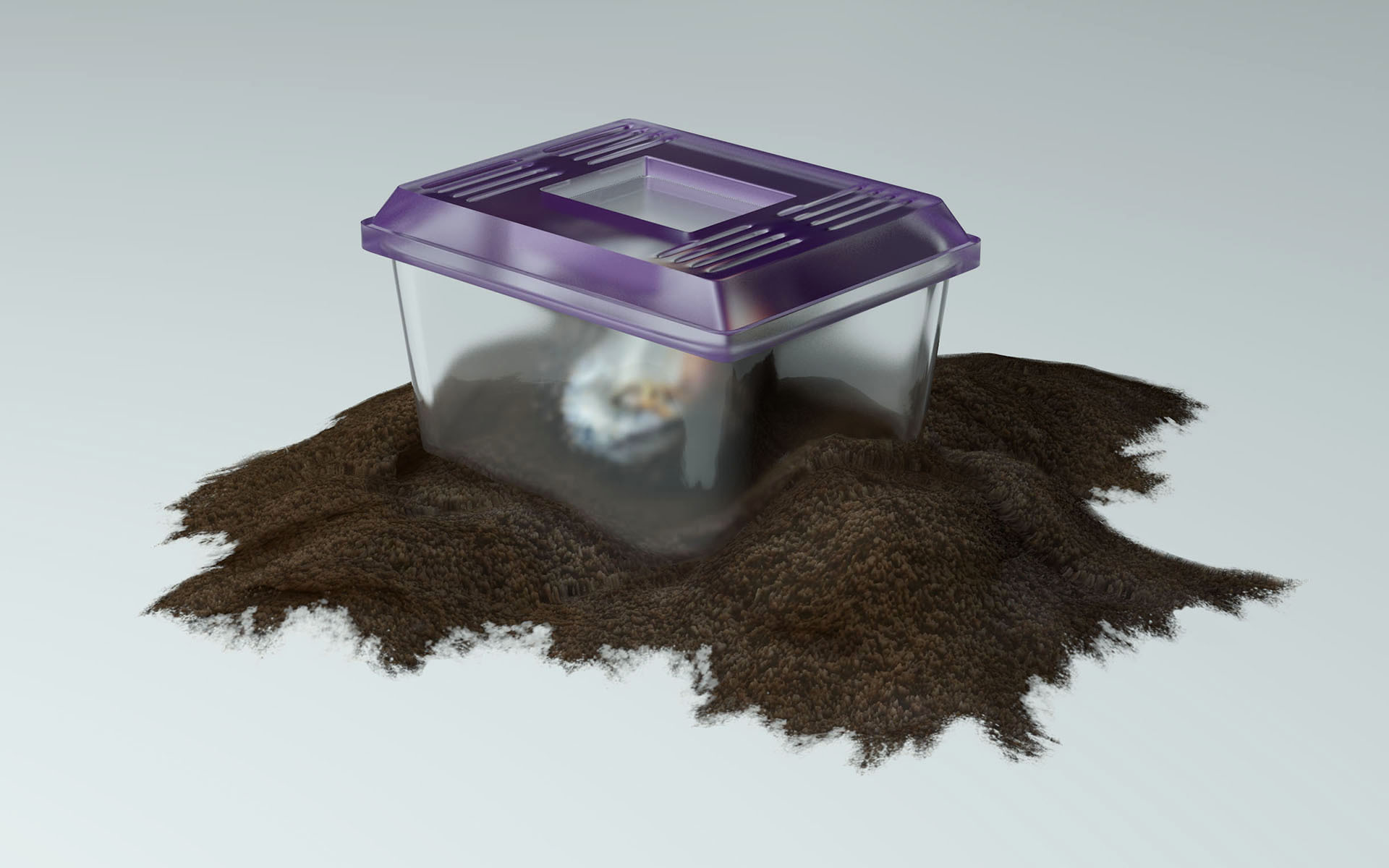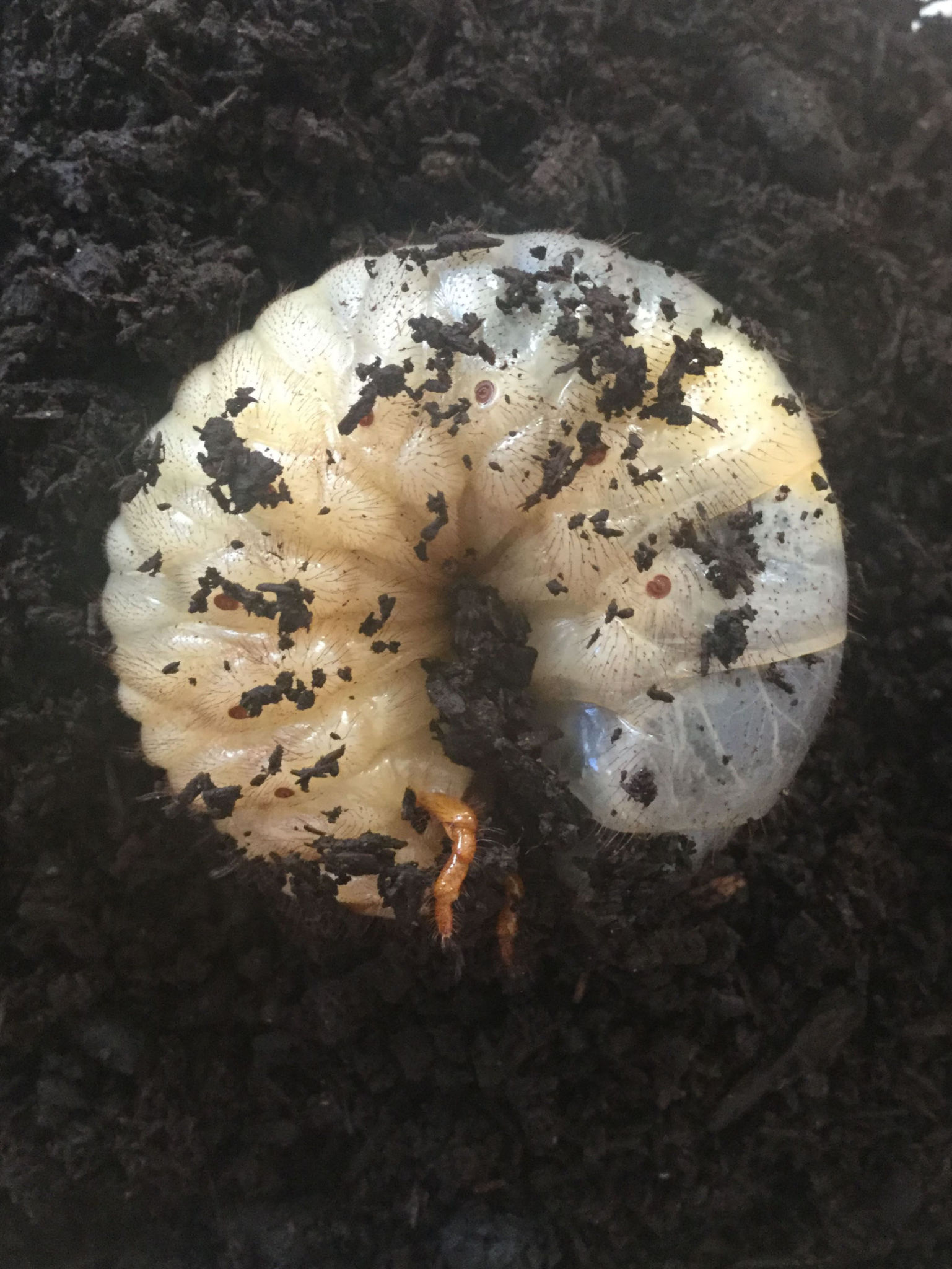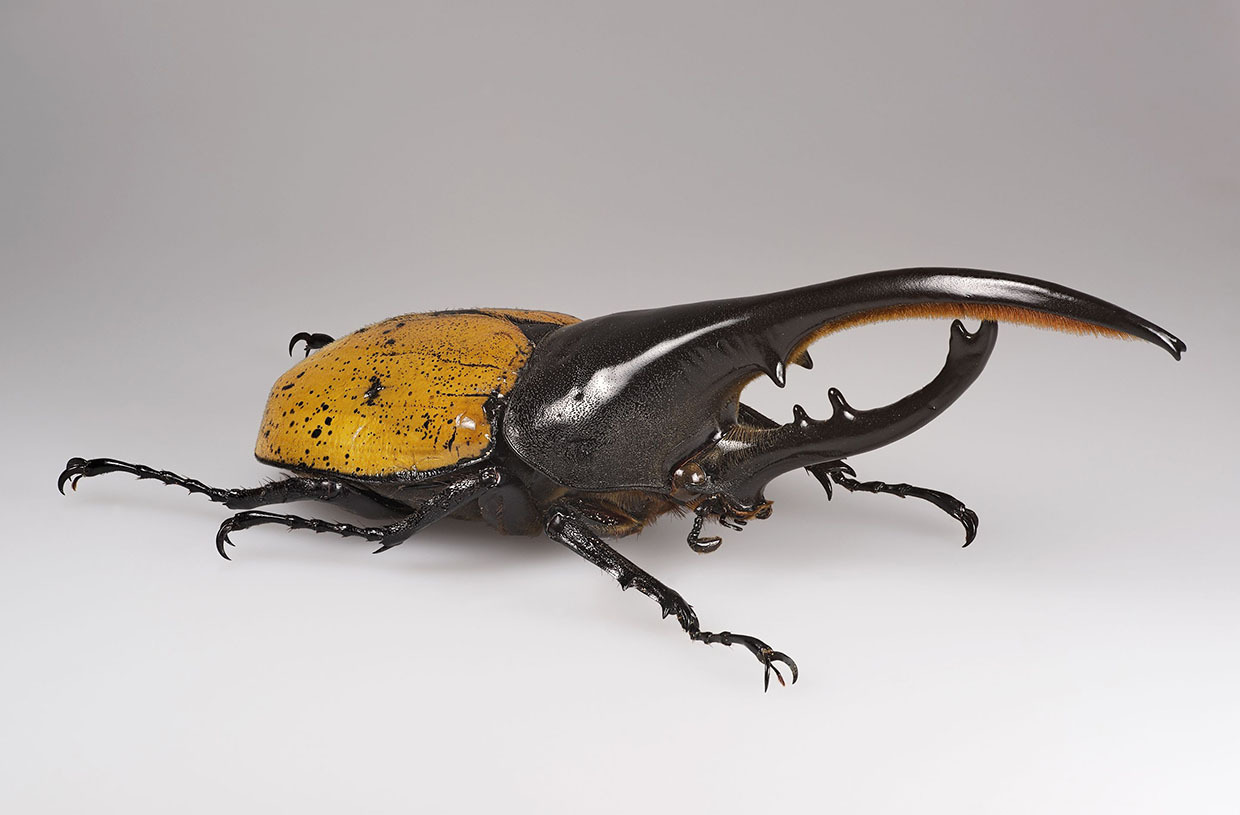
The Dirt Issue
Metamorphosis in Miniature
The beginning and end of any story rests in dirt. In the Georgics, an epic tribute to agriculture, Virgil quite literally introduces the humble act of tilling of the soil as the basis of human life, elevating agriculture into a grand stage upon which the gods act out their honorable acts but also their foibles. In one such story, he references that of Deucalion who, following the Ancient Greek deluge, was instructed to repopulate the world by picking up stones from the earth which were transformed into people after being tossed behind his back.
Like Deucalion, I turn to the soil to see myself: my imagined future, and the transformations I must make to achieve it. Like those antiquarian poets, the surface of the earth is a page that I write on—though, incidentally, my bed of dirt is a large-sized plastic Kritter Keeper filled with “Monster Flake Soil,." Inside lurks a Dynastas hercules lichyi larva.
The larva is essentially a finger-sized grub, maybe larger than a finger, bulbous and engorged, always curled in a fetal position, and equipped with pinchy pincers. It’s not a pretty sight, but I love it: my friend from the dirt.
Raising a beetle is an exercise in patience. Caring for a larva—a process that lasts for up to about two and a half years for this species, the majority of the beetle’s life, is essentially to care for the soil: a nondescript but malleable surface that suggests so much potential. One wonders, what will grow here (hopefully no fungus), what might it be shaped into (a nice, densely packed pupal cell?), and what might its subtle movements—the heaving of the surface, as if the dirt itself were breathing—indicate is happening below?


Because it’s tough to observe the larva hidden within the deep, to look beyond the soil’s surface is to plunge into neuroticism, scrutinizing every little change within sight to ensure the larva’s habitat is kept comfortably intact. How is the soil: is it damp enough, but not too wet? Too dry? Are there any pests—mites that might attack the larva or fungal gnats that could ultimately creep into the home? Look, the surface has lowered a bit, the top-most layer replaced with frass (beetle poop) as the larva slowly consumes its surroundings. Does the soil need replacing—should I send an email to the breeder to order more?
In the wild, this larva would most likely live within the decaying trunk of a tree. Unable to see, it explores the world through touch—or, since its habitat doubles as its food, through ingesting and consuming its surroundings. The larva draws in, becomes the world, leaving little barrier between itself as an individual creature and its surrounding environment –– before, in a total about-face, it seals itself from the outside by forming a pupa. After about a month, it is “born” again, breaking through the surface as a reformed thing, a fully adult beetle, discrete from the environment, its best self.
Just before reaching this point, the beetle parent’s faith is tested upon making a disturbing discovery: the shed, discarded skin of the larva left on the surface just after molting. It looks as though the larva’s body had deflated, its life sucked out of it. The nightmarish sight is sure to make any amateur assume that their earthen pet had perished in a most miserable, disturbing way—only to realize that quite the opposite, it thrived well enough to outgrow itself, a practice-run for its eventual metamorphosis...the moment we’ve all been waiting for. First assumed to be a tragedy, it is a triumph; through this rite of passage, the beetle is quite an inspiring specimen.

The “planting” of a beetle into its habitat of dirt—that promise of something emerging anew someday, years later—is a promise to embrace and anticipate your own life’s changes as well. The earth itself is prone to transformation, albeit sometimes in slow-moving and imperceptible ways: the shifting of plates, the erosion of surfaces and coastlines. Of course, there’s also the continual turning of arable land for sustenance, the impressionability of clay translated into exquisite works of art that are themselves commentaries on life.
Somewhere under the opaque soil of a beetle owner's Kritter Keeper, the larva sits, hidden for weeks at a time. I sometimes wonder about my own: has it died? Is it beginning its transformation? I won’t dig into the soil to confirm either suspicion, lest I should injure a fragile pupa in the process: Schrödinger’s beetle. Ritual dictates that I simply wait for one of those rare moments where I see the larva's head pressed against the transparent plastic wall of its habitat: a pincered mandible peering out from a break in the dirt, safely secured in one of the far corners of the habitat.
Even though it has no eyes, I can’t help but imagine the larva is looking outward, contemplating the alien world that it will someday join and make its own. It reminds me of the listless days years ago at my mother’s house in New Jersey when I, for no real reason aside from boredom or longing, would walk up to the front door simply to peer out the window—watching people walk by, or the neighborhood children playing, or the mail carrier making deliveries from house to house—hints of lives enacted outside the walls, by routine, while I stood solitary and stagnant in a case of self-imposed arrested development.
Today, I find myself in a similar situation: staring out my Brooklyn apartment window at the uncharacteristic stillness of a city amidst a global pandemic, which has drawn people indoors across the country and around the world. In this ironic moment of being alone together, we’re all boxed in, united in our longing for the moment we may re-emerge. Anticipating my beetle will come out within a few months, I wonder: what world will it—will we—find ourselves in then, when so much can change overnight? In this moment of uncertainty and intense societal transformation, the humble larva’s unwavering determination to grow and change grounds me.

Could we all be so brave as the beetle larva, casting away its old self in a continuous state of reinvention? Indeed, one might not consider a humble insect—let alone a baby one—functioning as the stable rock, or beacon, that has grounded me in emotionally turbulent moments of my life, a statement that I share with total seriousness.
Its destiny to unapologetically change—at least once it’s ready, as you must trust the larva to transform when it deems fit—has influenced my approach to beetle raising and with how I orient myself in imagining the life before me, how one might bury a time capsule to connect with the distant future.
When the beetle entered my life, I had been climbing my way out of a pit of self-loathing that had lasted for years, feeling largely stagnant and caught in a second adolescence: at home in my mom’s house, struggling through low-quality freelance work. Out of apathy or fear, I spent much of that time without the drive to push myself ahead to get out of it.
But anticipating the form the larva might take in the future—not too far away, but far enough to feel uncertain what life would have in store, years down the road—prompted me to envision where I could be in my life, too. If a bejeweled scarab, beautiful and strong, emerged from this miniature, boxed wasteland, could I dig myself out someday, too?
I still wait for my little beetle to make its appearance, though I had dug myself from my hole in the meantime. Looking at the dirt each day, I look forward to shaping this landscape with my insect friend.
How to Care for Your Beetle (Tofugu)
Bugs in Cyberspace (Ibid)
Timelapse of a Hercules Beetle's Life-Cycle (National Geographic)
Joe Sutton is a writer based in Brooklyn and began his beetle-raising hobby in 2017. Follow him on Twitter.
Lead illustration by Evander Batson.
Photo of Hercules beetle by Didier Descouens via Wikimedia Commons.
Pet photos courtesy of the author.